Tichelaar Makkum large antique tin glazed handpainted Delft style covered vase
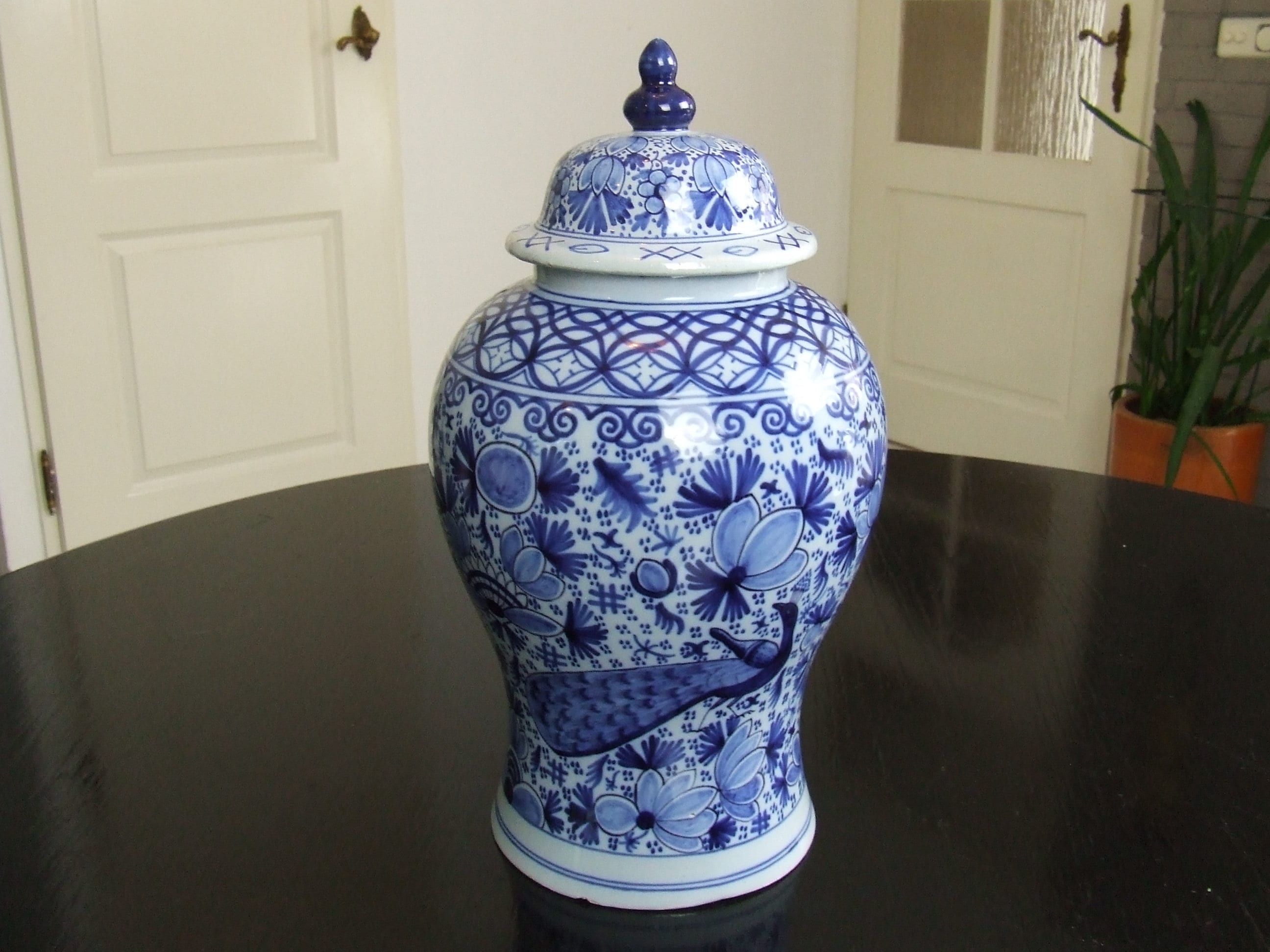

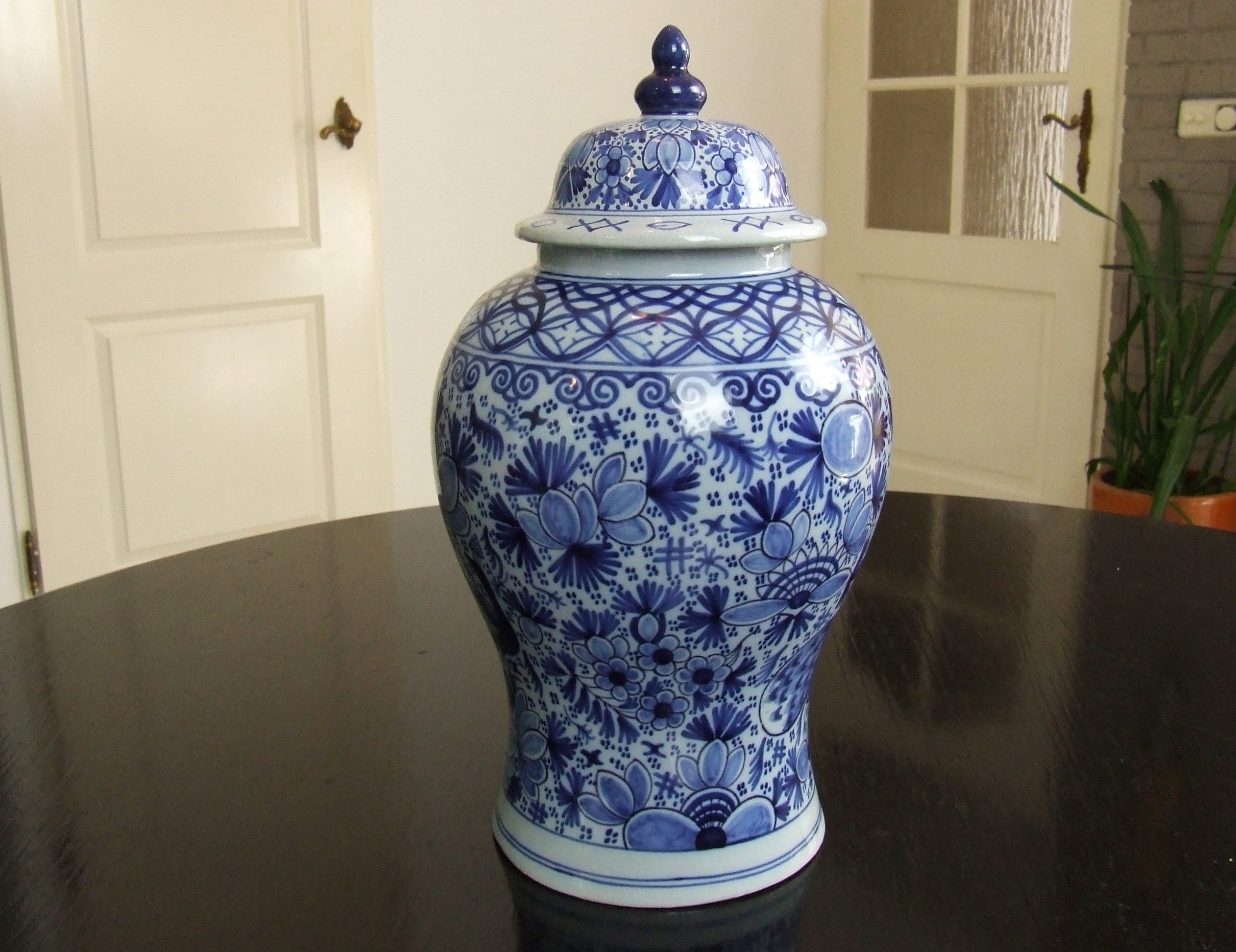
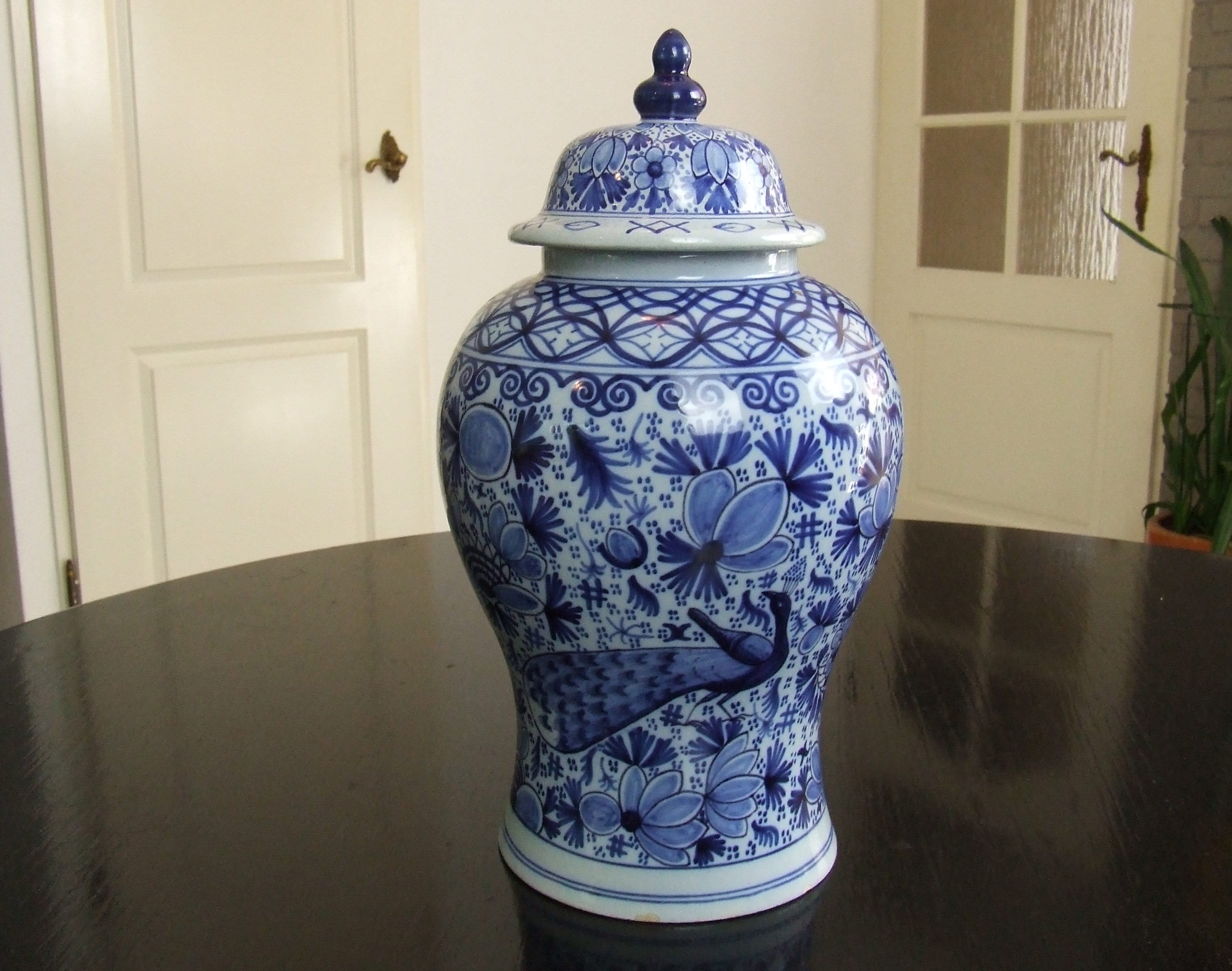
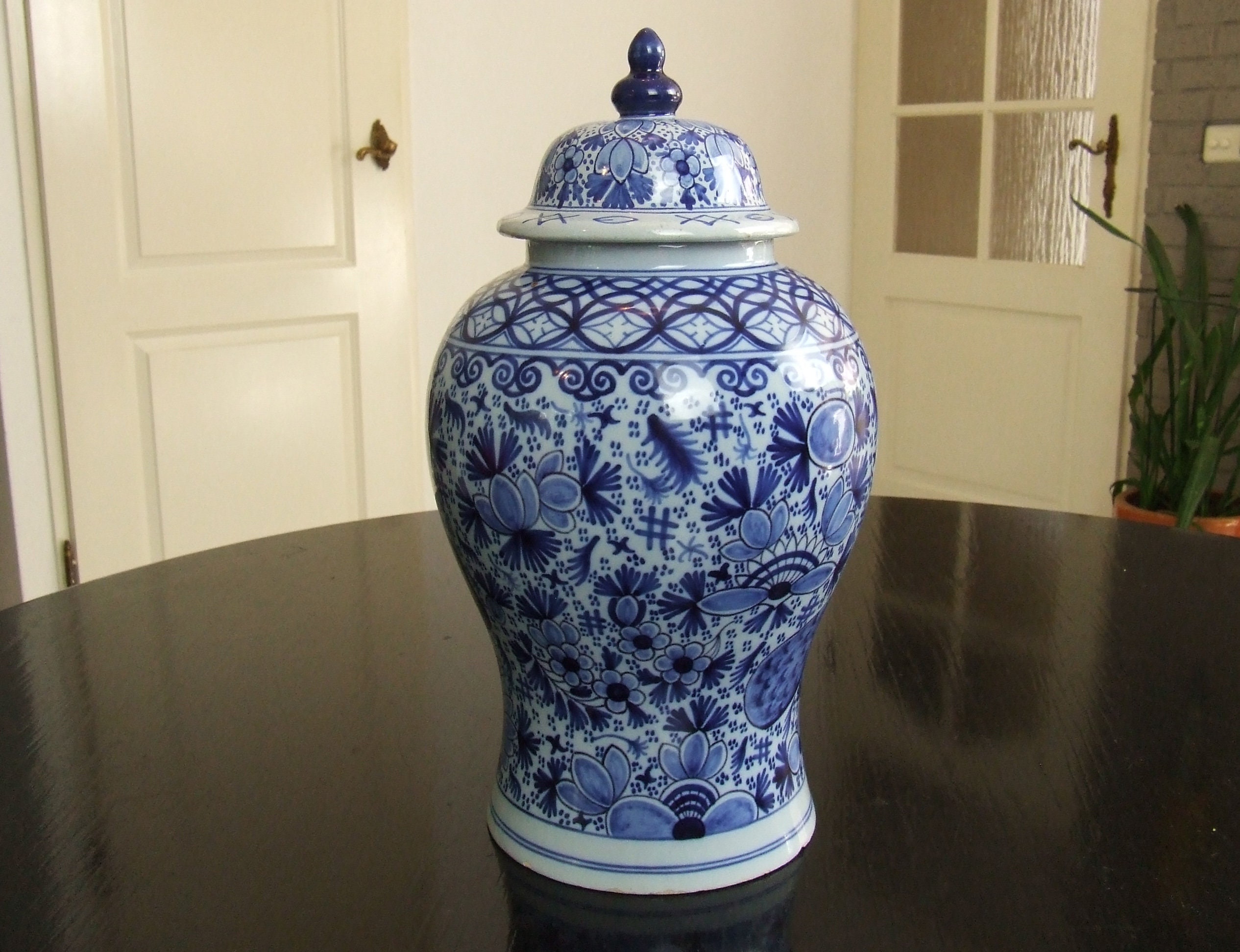
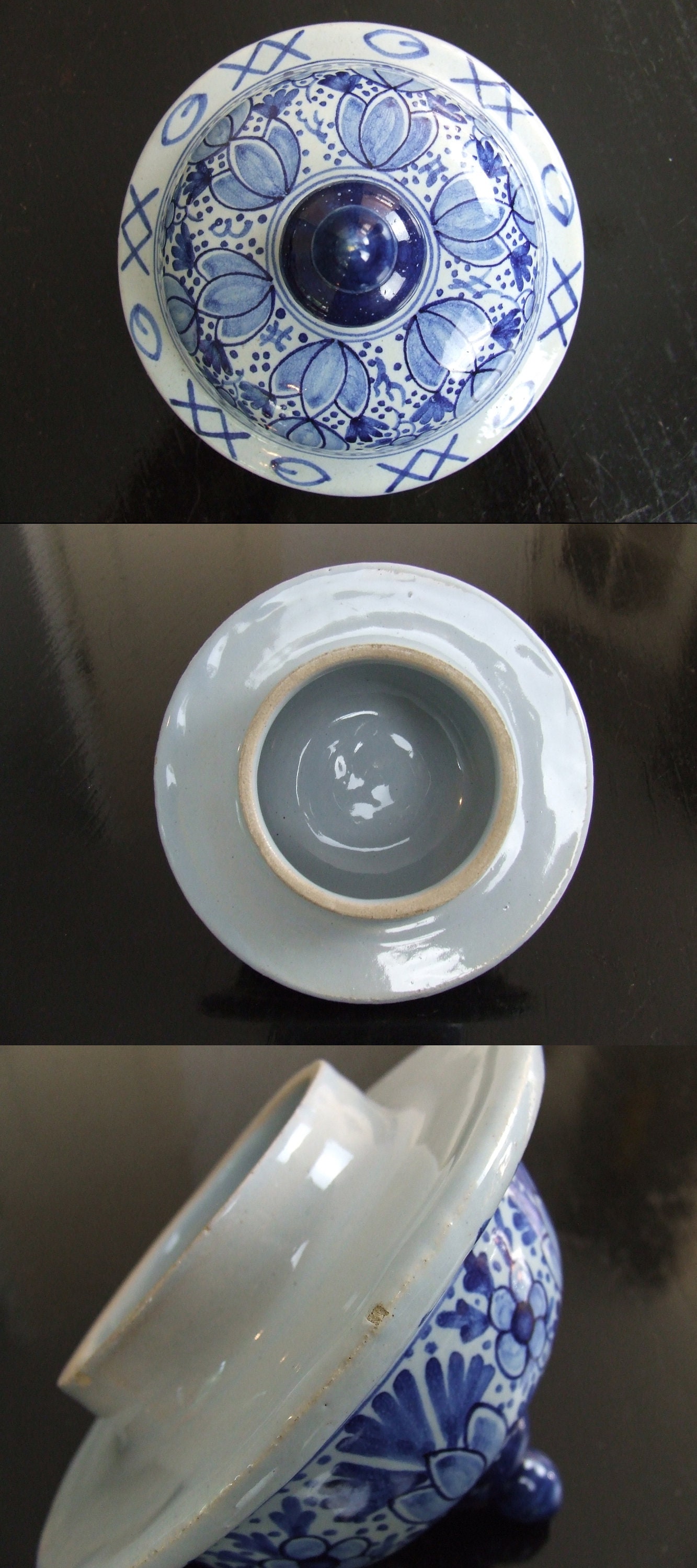

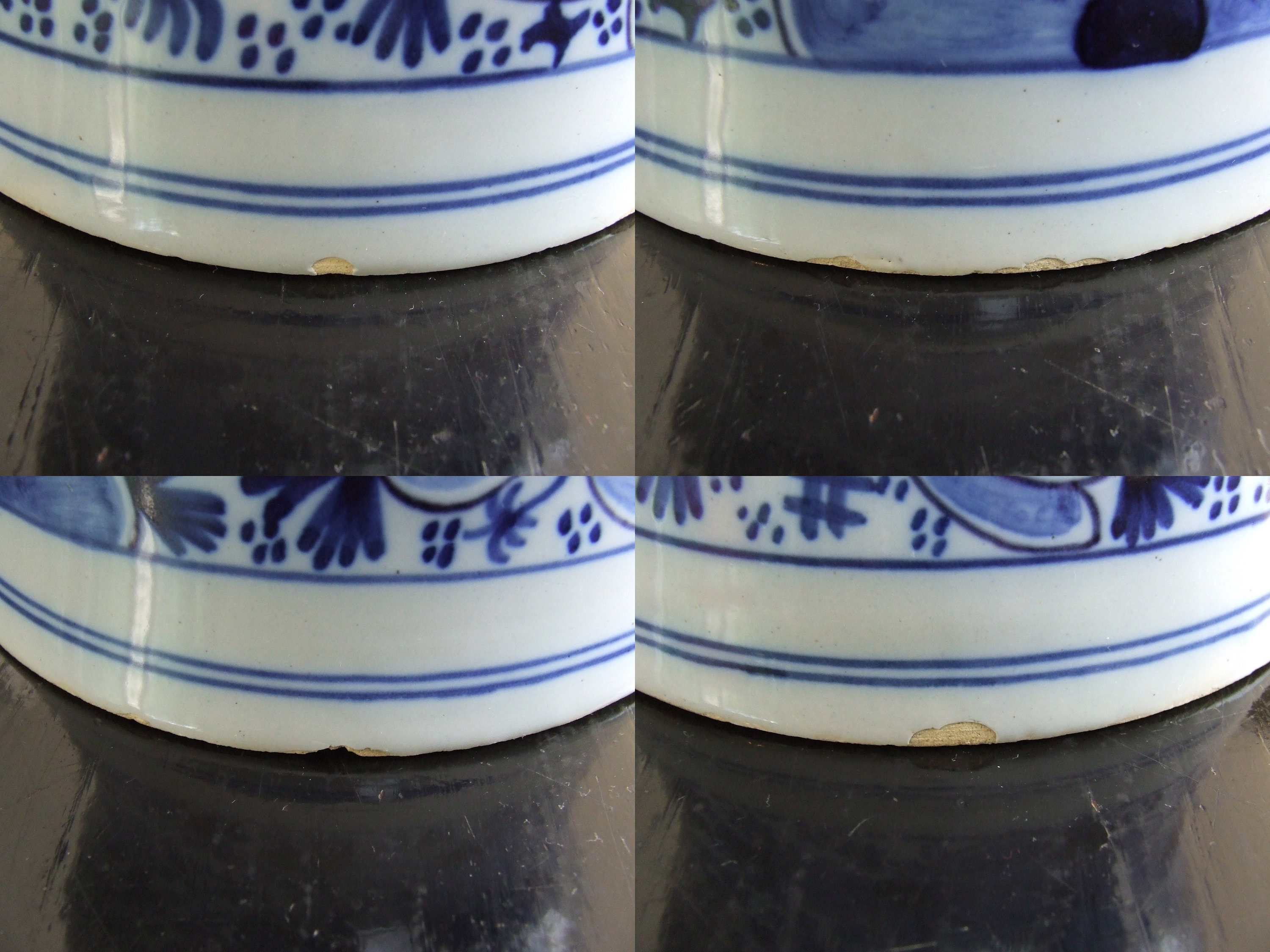
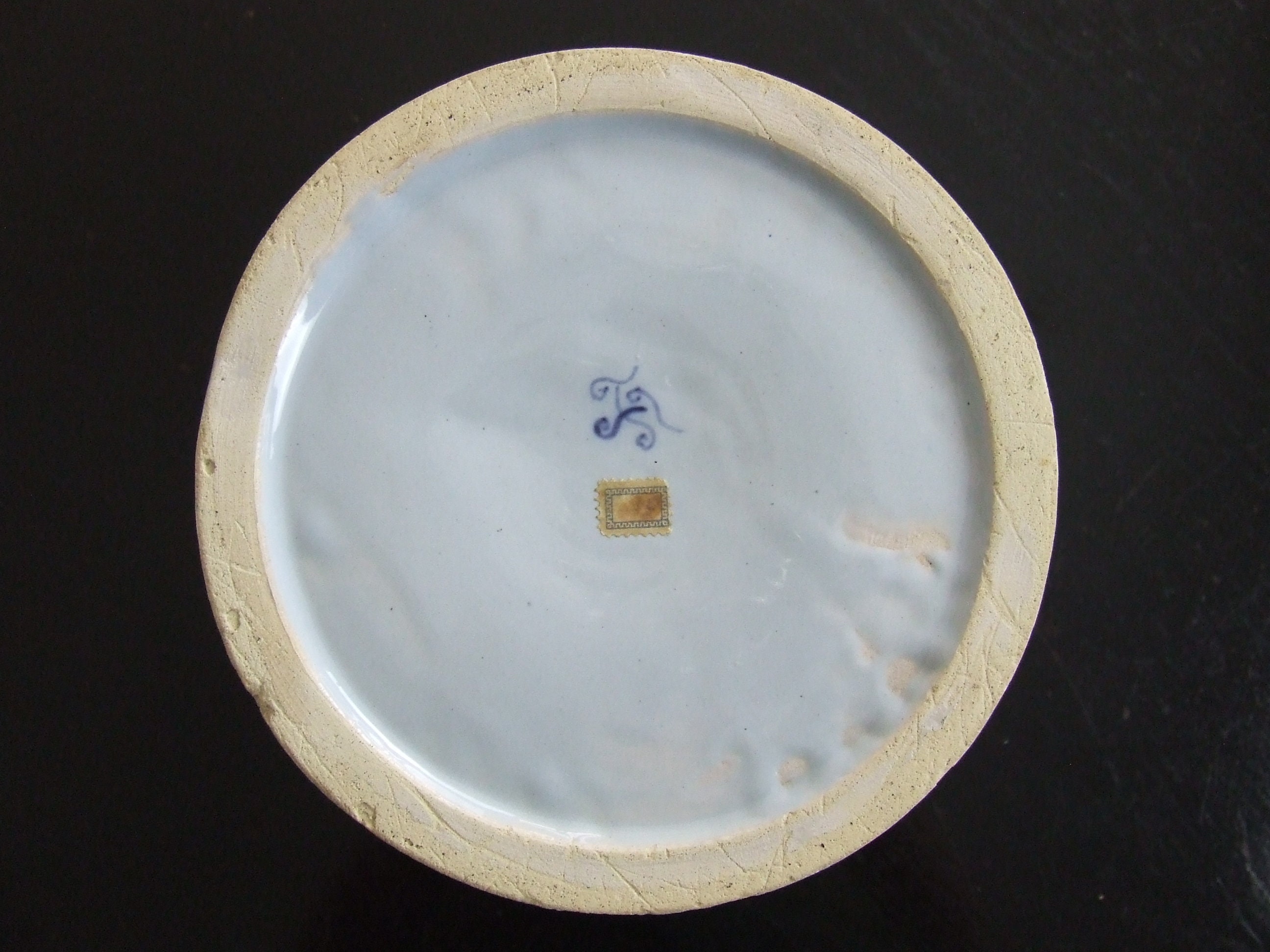
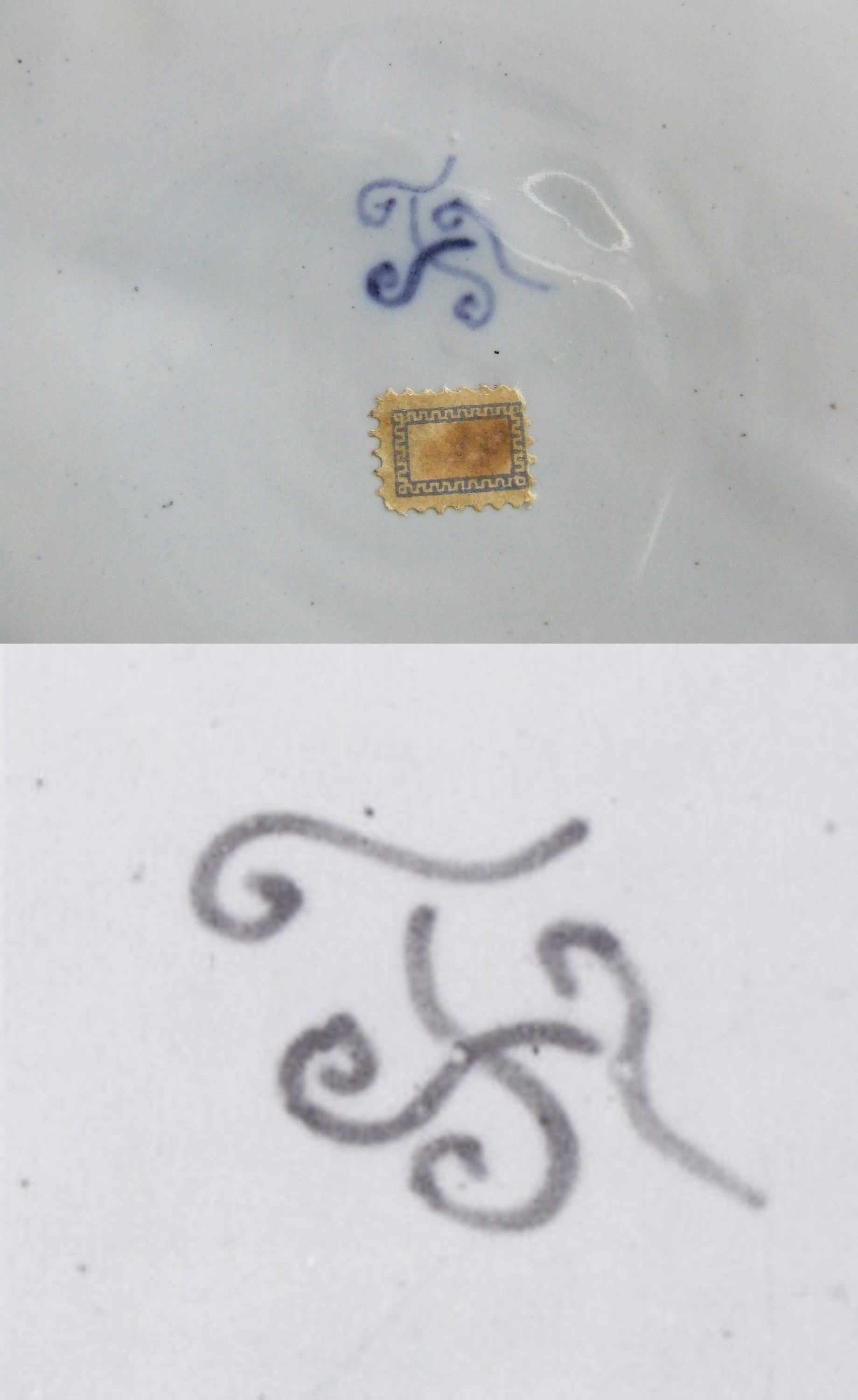
$175.77
Large antique handpainted tin-glazed covered vase ("pul" or "dekselvaas" in Dutch) made between 1890 and 1905 by Tichelaar in Makkum, the Netherlands. The vase features a traditional Delft decor called a "Peterselie decor" in Dutch, which translates to "Parsley decor". This decoration is characterised by flowers (or other elements, such as birds) being surrounded by parsley-like leaves and groups of dots. In this case the decoration features two large birds-of-paradise (one on each side of the vase) and several types of stylised flowers. The shoulder of the vase is decorated with ornaments. The lid has a matching decor to the body of the vase. The vase is very sturdy, with thick walls, which is often seen in early (pre-1910) vases of Tichelaar.
This vase is handmade according to century-old traditions identical to how 17th or 18th century Delftware was made. The earthenware (made from local yellow clay) is shaped by hand in a mould and after a first firing glazed with an opaque white tin-glaze. The colours are then painted on this glaze and fused with it through a second firing. This creates a product with a beautiful and unique appearance. Tichelaar is the only remaining Delftware producer in the Netherlands that still follows this procedure.
The vase is marked at the bottom with an early handpainted Tichelaar mark of two crossed T's. This mark was in use between 1890 and 1943 by Tichelaar. There is no painter's signature, as this only became common use at Tichelaar after 1945. But from the way the Tichelaar mark is painted, it is likely that Mr. Eit Wijkstra is the painter of this vase. Eit Wijkstra was one of the early painters at Tichelaar, where he worked from 1882 till 1905. He specialised in wall plaques and tile tableaus, but also painted other items such as plates and vases.
There is a small paper label affixed to the base of the vase, which is an early label used by Tichelaar to indicate the catalogue number of the item. After 1943 Tichelaar painters included the catalogue number in their painted mark, but before 1943 small paper labels were used. This vase model has number 65 in Tichelaar's catalogue. That number can also be read on the label if you look carefully (the label is positioned upside down vis-a-vis the Tichelaar mark).
The lid on this vase matches well and seems to be from the same period as the body of the vase, but it is not the original lid of a model nr. 65 vase. It is actually a somewhat smaller lid from a model nr. 306 vase, which is a slightly smaller model (32 cm high) in Tichelaars catalogue with the same decoration.
Condition: Very good, there are no cracks, hairlines or restorations on the vase. Some small glaze damages can be found on the base of the vase (see detail pictures), but nothing very disturbing. Tin-glaze is an enamel glaze that is very brittle on edges, so these kind of small damages are normal on older vases. The rim of the vase also shows some wear, which is not visible when the lid is on the vase. The lid itself has one small glaze damage to the side of its rim (see detail pictures), which is not very noticeable. The glaze of the vase has no crazing and shows little wear. Especially the glaze on the body of the vase is very smooth and beautiful. There is a small glazing / firing artefact on the shoulder of the vase (see detail pictures). Small irregularities like these are often found on older vases of Tichelaar and are part of the artisanal way these vases were made. They should not be considered a defect. The inside of the vase is very clean and fully glazed. The unglazed footring of the vase shows no discolouration, which is remarkable for an old vase like this, as is the fact that it still has the small paper label with the catalogue number preserved.
A rare and early Tichelaar vase, most likely painted by one of the better-known painters from Tichelaar. Great for decoration or for the true Tichelaar collector.
Made by: Royal Tichelaar
Place of manufacture: Makkum, the Netherlands
Year of manufacture: between 1890 and 1905
Model (catalog) nr.: 65 (lid from model nr. 306)
Method of decoration: handpainted (tin-glaze)
Size: height: 38,0 cm, diameter: 21,5 cm (capacity: 5,6 litres)
Weight: 2,8 kg
Current catalogue price: not available, this model is not produced anymore by Tichelaar. You can find the current prices for other handpainted vases and bowls on the website of Tichelaar here: https://www.tichelaar.com/shop/fine-ceramics/vases-bowls.
Additional pictures of the object can be provided if required.
----------------------------------------------------------------------
About Tichelaar:
Royal Tichelaar is located in a small fishing village in the north of the Netherlands, Makkum. The history of the company goes way back to 1572, making it the oldest continuously operating company in the Netherlands. Tichelaar means "tile-maker", and at first the factory only produced bricks and tiles, but around 1700 production also started of tin-glazed household and ornamental dishes. After 1890 a large part of the production became oriented towards ornamental Delftware in various forms and styles. Tichelaar uses a yellow baking clay for their products, which is locally excavated. After baking it receives a white tin-glaze and is subsequently decorated. This is the way all Delftware was produced centuries ago, and Tichelaar is the only remaining factory to still do so. Other Delftware producers in the Netherlands around 1900 switched to painting directly on white baking clay without the extra layer of tin-glaze. True to the spirit of tradition, Tichelaar keeps mechanisation to a minimum and all items remain handpainted. The quality of the handpainting is very good, it has a distinctive "Frisian" character that is very recognisable.
Tichelaar today still produces some Delftware, but on a very limited scale. The traditional production process makes that the items are nowadays very costly to produce, and for many too expensive to buy. A small number of items is still produced and offered through the shop on their website. The company nowadays has its main focus on producing speciality tiles, with special glazes for architecture / building purposes. More information can be found on their website: https://www.tichelaar.com/.
----------------------------------------------------------------------
This item will be carefully packed and send by tracked and insured mail.
If you buy multiple items from our shop in one purchase, we will try to combine the items into one parcel. Any excess shipping costs will be refunded.
If you are not satisfied with your purchase, you may contact us within 14 days from the delivery date to return the item. If the item is returned in its original condition, we will issue a refund for the total purchase price of the item (return shipping costs are however not covered).
Shipping from The Netherlands
Processing time
1-2 business days
Customs and import taxes
Buyers are responsible for any customs and import taxes that may apply. I'm not responsible for delays due to customs.
Payment Options
Returns & Exchanges
I gladly accept returns
Just contact me within: 14 days of delivery
Ship items back to me within: 30 days of delivery
I don't accept exchanges or cancellations
But please contact me if you have any problems with your order.
Conditions of return
Buyers are responsible for return shipping costs. If the item is not returned in its original condition, the buyer is responsible for any loss in value.
Frequently Asked Questions
What are your shipping times?
We will send off your order within one or two working days. We use the standard parcel service of PostNL to ship our parcels. You can find their estimated delivery times per country here (shortened link to pdf download of PostNL): https://bit.ly/3ZHTMJ9. In the fourth column (parcels) you can find the delivery times of the standard service (in estimated business / working days). Please keep in mind that customs / import procedures in non-EU countries can sometimes add an extra week (or even two weeks) to the delivery times.
For shipments to the USA we use FedEx Economy delivery, as PostNL temporarily does not deliver to the USA due to changes in import duties. Estimated delivery time is four days after shipping, if all goes well at customs.
How do you pack your items, will my item arrive safely?
Broken ceramics is a thing we do not like! Not only is it a waste of time and money, but it also (often) means the end for a rare and unique item, which was treasured and cared for by their previous owners. So we really want to avoid any damages during shipping!
We have lots of experience of shipping ceramics, and we have seen what works and what does not work to protect ceramics during transit. If we ship multiple items in one package, each item is carefully wrapped and kept well seperated from the other items. We use large boxes, with plenty of buffer all around the items, so the packages can withstand a lot of abuse. All our packages should be able to cope with a 1,5 m drop without the items getting damaged.
Do you take care of the environment?
Yes we do. We re-use packaging materials as much as possible, which means we rarely need to buy new materials for our packaging. Only foam peanuts are sometimes bought by us, in which case we prefer to use green starch based peanuts which are fully biodegradable, non-toxic and water-soluble.
Each year, we calculate the greenhouse gas emissions in CO2-equivalents caused by our shipping. We multiply that amount by 200% and then offset it in certified CO2 compensation projects based on tree planting / reforestation in various parts of the world. So far, we have offset 35,5 tonnes of CO2 emissions in projects in Bolivia and Borneo (Indonesia). See https://treesforall.nl/en/projects/ for more information on the projects.
How should I take care of my Dutch ceramics?
First of all, don't let them fall! Always handle them in a mindful way and put them in spots where they cannot be accidentally bumped over when cleaning or vacuuming. Some people put some (clean) sand in vases to make them more stable.
Second, don't clean them too often! Underglaze painted Gouda and Delftware can be perfectly cleaned with water if necessary, but often just dusting them off or polishing them up a bit with a soft dry cloth is enough. Overglaze painted items should not be cleaned too often.
The colours of ceramics do not fade in sunlight, so you can put them in bright spots where they look good. But do avoid large temperature differences, which will cause increased crazing in many Delftware and also Gouda type pieces.